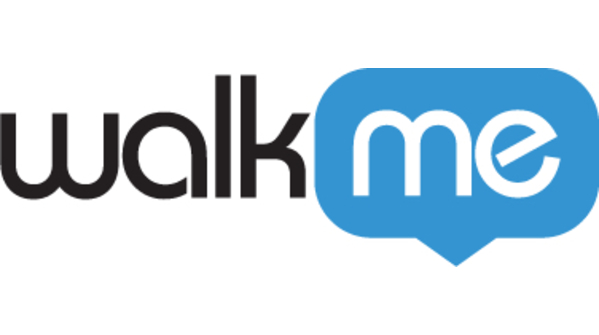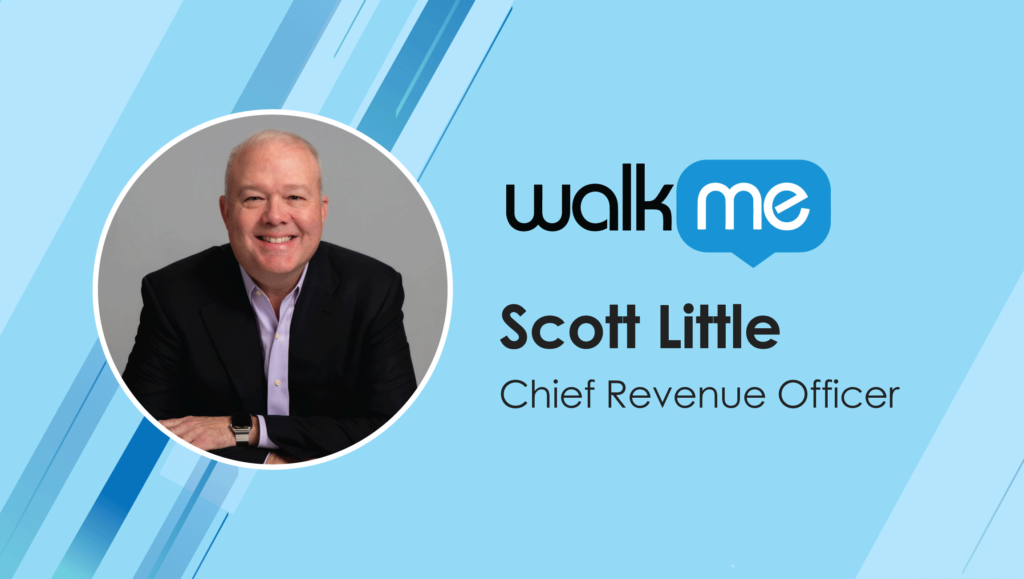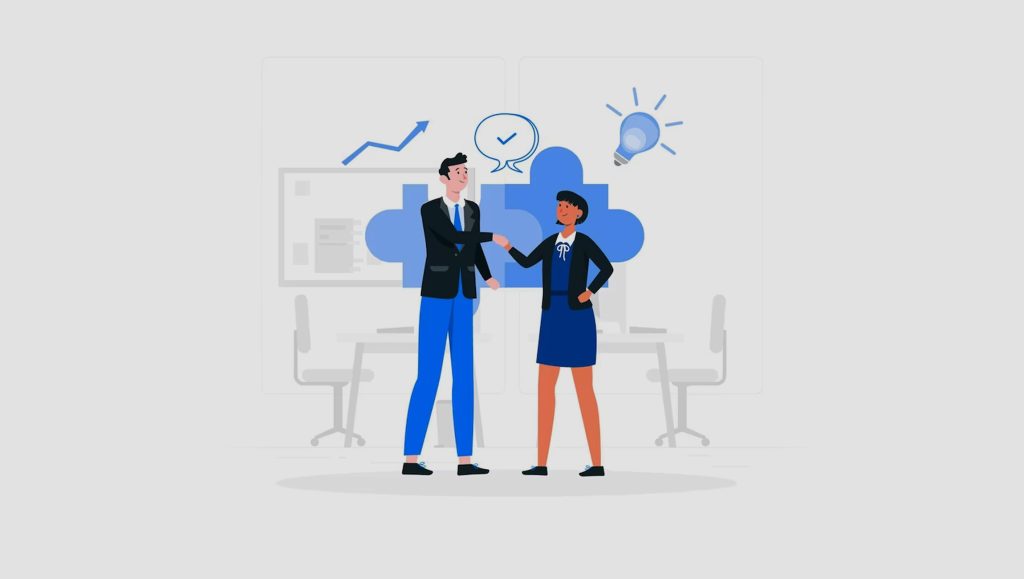Scott Little, Chief Revenue Officer at WalkMe discusses more on how B2B sales teams can maximize efficiencies across their selling cycles:
__________
Welcome to this SalesTechStar chat Scott, tell us about yourself and your role at WalkMe…
I’m a member of the executive leadership team here at WalkMe where I run sales in the go-to-market organization. I’m an engineer by training but have spent my entire 30 year career in sales. I spent my formative years at IBM and Oracle, and most recently I’ve been leading sales at smaller enterprise technology companies.
What do you feel about the state of the typical modern day B2B CRO? How are you seeing the role evolve in B2B?
The global economy has shifted dramatically in the last 6 months and so has the mandate of B2B CROs. When I joined WalkMe 7 months ago, the conversation with the board was all about how fast we can grow and what investments we need to make to ensure fast growth.
Now, that conversation is all about maximizing efficiency, even if that comes with slower growth. My fellow CROs at other organizations have shared that they are experiencing a similar shift in priorities and mission.
Read More: SalesTechStar Interview with Ryan Neu, co-founder and CEO at Vendr
Take us through some of your proven practices and revtech/salestech you have relied on over the years to drive growth goals?
I’ll speak to what I have the most experience with, which is in the enterprise software space and share my North Star best practice. You want to pick one of the many proven sales methodologies such as Sandler, value selling, MEDDIC, MEDDPIC, and so on. It doesn’t really matter which one you choose since the main difference is typically nomenclature. Pick one.
Then make sure that everyone in the company, not just people in the sales organization, understands the terminology and process. The most important part is that you choose a solid sales methodology that you believe your company can consume. Make sure everyone from sales, marketing, professional services, customer success, engineering and beyond are speaking the same language and are wired to support that methodological approach.
With all the salestech choices available today, it is important for sellers to keep certain things in mind to keep building successful selling cycles. Take us through a few ways you drive this closer to home at WalkMe?
It’s critically important to understand that all the sales tech available in and of itself can overwhelm a seller and a sales organization. If you’re not careful, the volume of sales tech deployed can really distract the seller with context switching between point solutions in the sales process, from actually delivering the opportunity to the business.
I recommend limiting the number of times a seller needs to context switch and then augment the seller’s experience with solid people-based automation technologies. Both of these together can give sellers an experience using enterprise sales tools that is more akin to the experience of using consumer-facing apps like Netflix and Uber.
After all, sales tech was designed to help sales professionals do their jobs better, faster, and with more ease, so using these tools should not take them away from actually selling and reaching their goals. Regardless of how sophisticated and complex the technology is, the user experience really needs to be easy and straightforward.
Read More: How Price Optimization Can Simplify the Complex in Enterprise Sales
How can sales teams today build more data driven processes at scale without compromising on value or customer need?
The key is to utilize the right technologies fully. As mentioned, there is so much sales tech out there, but if these technologies aren’t implemented and adopted correctly, navigating these technologies can dominate a seller’s day to day.
Instead of an increase in productivity, the reality is too often digital friction – an abundance of complex digital workflows and administrative tasks that ultimately weighs down on both the seller’s experience and value for the customer.
When digital friction hits a boiling point, software paralysis takes hold. Oftentimes, sellers revert to using minimal app features, delay tasks, or avoid them altogether. The consequence is wasted time, lost opportunities, protracted sales cycles, frustrated sellers, and failure to realize ROI on software investments.
The right digital adoption platform (DAP) can provide sellers with custom guidance and automation and actually pinpoint and resolve these digital friction points across a tech stack. The result is a better user experience for the seller along with increased productivity, better forecasting accuracy, and margins.
In order to build more data-driven processes at scale, sales leaders first need to understand how work gets done by discovering how sellers use the software available to them and where they struggle. Only then can they use data insights to improve the process.
Can you highlight more about the future of B2B sales and salestech and how you feel this market will shape up?
It is no surprise that we have witnessed dramatic changes to B2B sales in the past few years. The shift to virtual selling brought on by the pandemic has made the selling process more challenging. We are now seeing more of the traditional in-person relationship building aspects of selling coming back, but there is no denying that the process has changed and is largely virtual with many organizations only interacting with sales executives virtually. Another interesting change is that there tends to be more stakeholders involved in the virtual selling process, which also makes selling harder since you have to sell to more people.
These changes have also highlighted the importance of using the digital tools at your disposal in the most frictionless way. In the face of the additional challenges of virtual B2B selling, the future is first and foremost about making sure you are really efficient and successful in a primarily virtual selling process. And to do that, you certainly want to be using all of the tools at your disposal.
Moreover, I believe that the build up of sales technologies at large organizations has reached a tipping point in which we will see sales organizations becoming more rep-centric in their approach and focusing on optimizing what they already have rather than buying new sales tech. The crippling effects of digital friction run rampant throughout many sale cycles along with the increased pressure on businesses to cut back on budget are fueling this trend. Despite the volatility in many industries, investing in the seller experience is always a good investment, one that will pay dividends across the business.
We’ve already seen tremendous innovation in sales, harnessing actionable data, automation, and AI, now we’re going to see a focus on the user experience of the seller as they navigate the digital sales jungle.

WalkMe pioneered the Digital Adoption Platform (DAP) to simplify user experiences by combining insights, engagement, guidance and automation capabilities. Founded in 2011, WalkMe’s mission is to make digital adoption for employees and customers simple, while increasing enterprise productivity.
Scott Little is the Chief Revenue Officer (CRO) at WalkMe, where he is responsible for scaling WalkMe’s enterprise sales efforts, including international expansion and national, state, and local government initiatives. Scott joined WalkMe from Software AG, where he served as Senior Vice President of the Americas before assuming the role of CRO. As CRO, he led global sales, sales operations, alliances and channels, driving revenue growth around the company’s digital business and shift to SaaS. Prior to Software AG, he served in senior sales roles with Sigga Workforce Technologies, AVEVA, Commvault, and Oracle, where he spent nearly two decades. Scott holds a Bachelor of Science degree in Electrical Engineering from Texas A&M University.
Missed The Latest Episode of The SalesStar Podcast? Have a quick listen here!
Episode 157: Inventory Optimization and Its Impact on Supply Chains with Richard Lebovitz, President and CEO, LeanDNA
Episode 156: Purpose-led Advertising Fundamentals with Julia Hitchman, Chief Commercial Officer at Good-Loop
Episode 155: How Employee Recognition Programs Can Keep Salespeople on Their Toes: with Kevin Yip, Co-founder and President of Blueboard






















